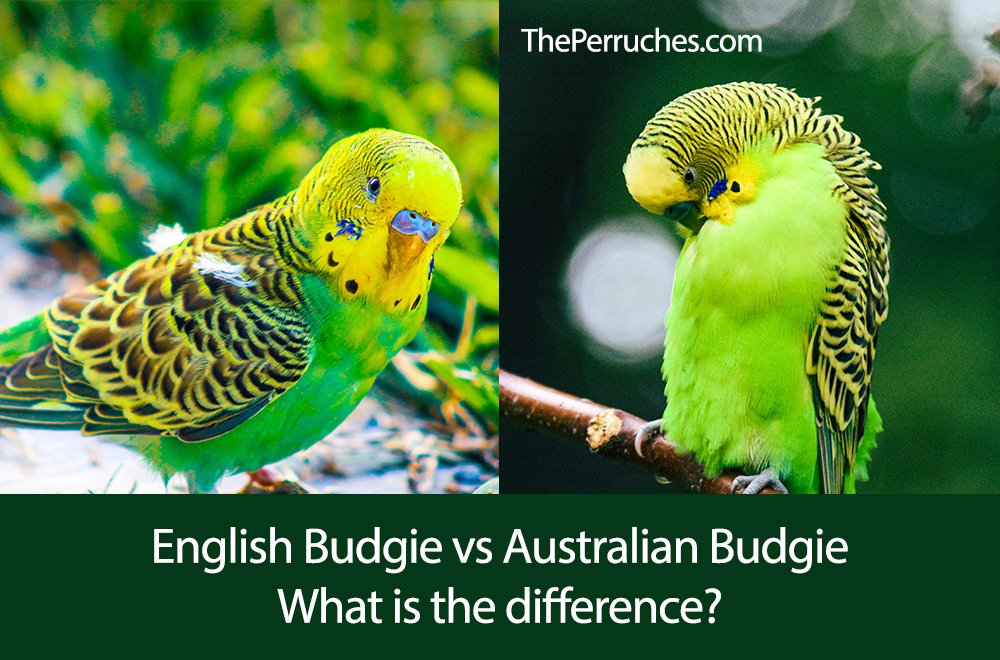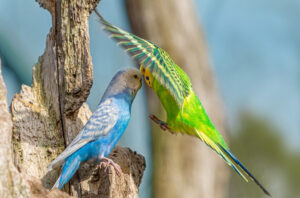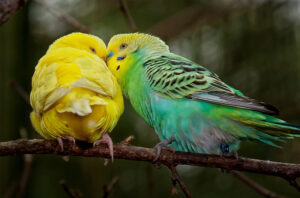English Budgie vs Australian Budgie: What is the difference?
When it comes to the world of budgies, there are two primary types that enthusiasts often encounter: the English Budgie and the Australian Budgie. These two varieties showcase distinct characteristics that set them apart.
English Budgie: Petite Elegance
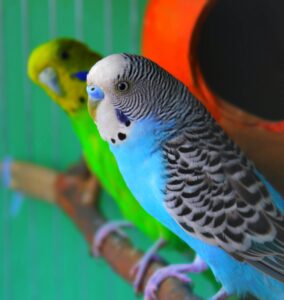
The English Budgie, often referred to as the “show budgie,” captivates with its larger size and striking appearance.
Renowned for its broad, feathery head and vibrant plumage, the English Budgie exudes an air of elegance.
With a more docile demeanor compared to its Australian counterpart, these budgies are often favored by those seeking a calm and captivating avian companion.
Their deliberate movements and refined disposition make them a delight to observe.
- Scientific name: Melopsittacus Undulatus
- Common names: English Budgie, Show Budgie
- Average life span: 5-10 years
- Relative size: Larger than its Australian counterpart, with an average length of 18 cm (7 inches)
- Weight: Typically weighs between 30-40 grams
- Egg clutch: Lays clutches of 4-6 eggs
- Color: English Budgies come in an array of colors and patterns, often with vibrant, show-stopping plumage.
Australian Budgie: Lively Charm
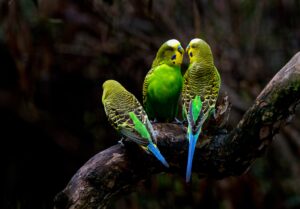
The Australian Budgie, also known as the “wild-type budgie,” boasts a more compact build and lively energy.
Recognizable by its sleeker profile and distinctive wing markings, the Australian Budgie embodies the essence of its free-spirited wild relatives.
These budgies are renowned for their spirited chirping, playful antics, and curiosity-driven behavior.
Their active nature and social interactions make them ideal for individuals seeking an engaging and interactive pet.
- Scientific name: Melopsittacus Undulatus
- Common names: Australian Budgie, Wild-Type Budgie
- Average life span: 5-10 years
- Relative size: Slightly smaller than the English Budgie, averaging around 15-18 cm (6-7 inches)
- Weight: Generally weighs between 25-35 grams
- Egg clutch: Typically lays clutches of 4-6 eggs
- Color: Australian Budgies exhibit a natural, wild-type coloration, often featuring a mix of greens and yellows with distinctive wing markings.
Intriguingly, while both English and Australian Budgies belong to the same species (Melopsittacus Undulatus), their respective characteristics and appearances have been shaped by years of breeding and natural adaptation.
Understanding these differences can guide your choice when welcoming one of these delightful budgies into your home.

